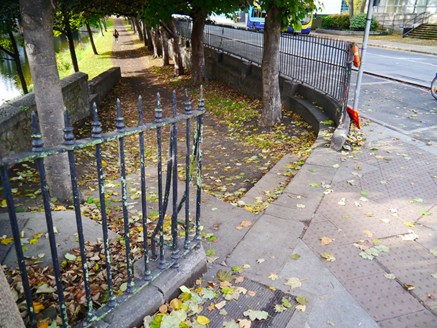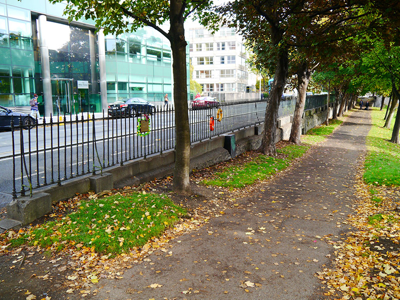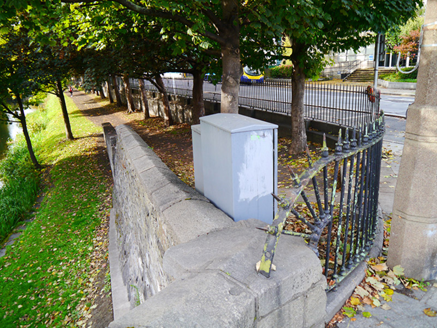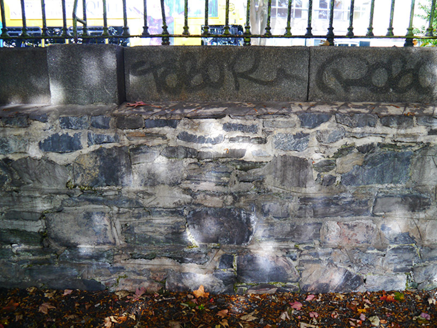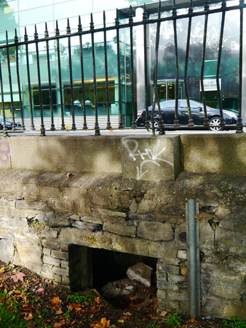Survey Data
Reg No
50930185
Rating
Regional
Categories of Special Interest
Technical
Original Use
Gates/railings/walls
In Use As
Gates/railings/walls
Date
1800 - 1840
Coordinates
316873, 232949
Date Recorded
29/09/2015
Date Updated
--/--/--
Description
Iron railings mounted on granite plinth, built c. 1820, marking boundary between Wilton Terrace and Grand Canal towpath. Cylindrical iron railings with pointed tops and cast-iron collars, mounted on dressed granite plinth over random limestone rubble wall (exposed to south-side only). Braced by raked iron supports on projecting dressed granite plinth stops to south side. Curved section to eastern end, pierced by a pair of dressed granite steps, where railings abut western parapet of McCartney Bridge; quarter-circular iron fixing adjoins railings to granite coping of bridge parapet. Square-headed opening to south side with brick surrounds and rendered lintel.
Appraisal
The Grand Canal, connecting the City of Dublin with the River Shannon, was first proposed c. 1715, with work by the Commissioners for Inland Navigation beginning in 1757. By 1804 the canal had been completed. Dividing the towpath of the Grand Canal from the elevated roadway of Wilton Terrace, these railings match those which bound the small park to the north-west on Wilton Place. The two sets of railings were likely erected together, during the early-to-mid nineteenth century, however, elements of the rubble stone base may have been constructed at an earlier date, possibly in conjunction with the canal or McCartney Bridge, c. 1790. The canal is an excellent and well preserved example of late-eighteenth century engineering and is of socio-historic importance to the city. They enhance the setting of the canal and McCartney Bridge.
